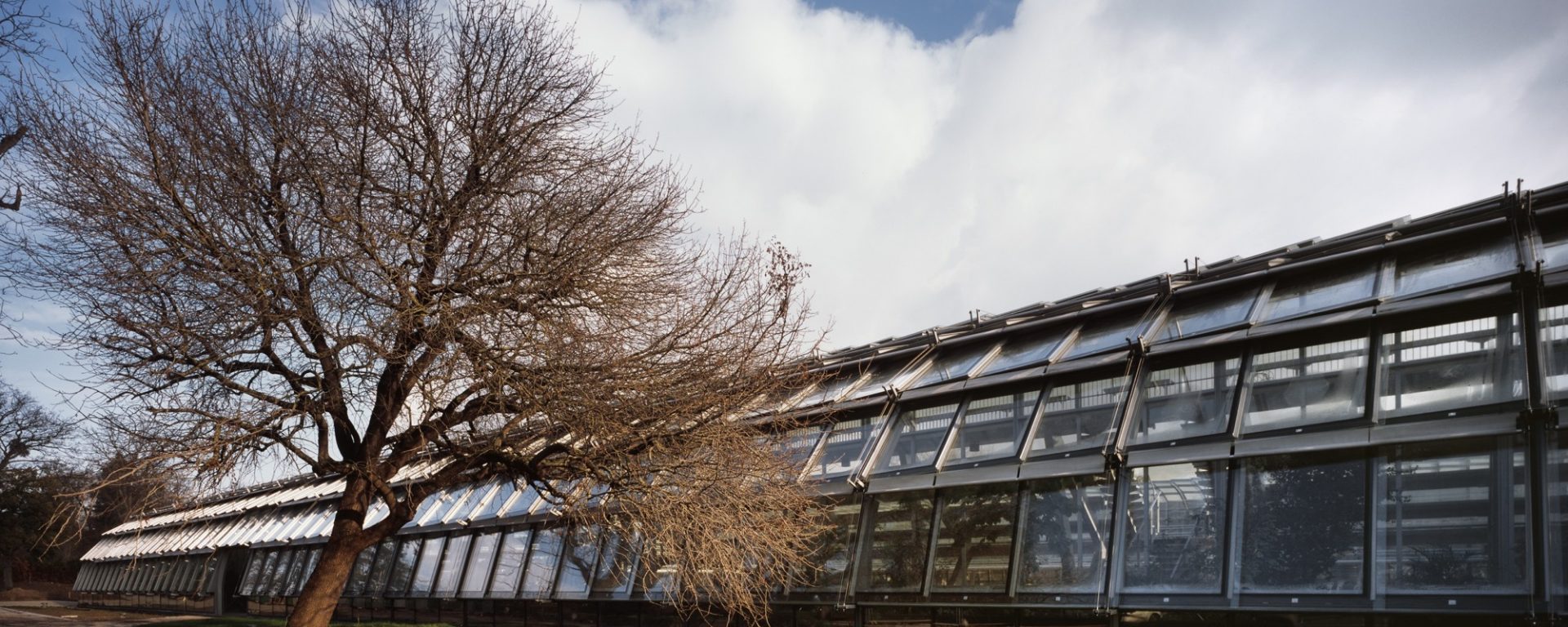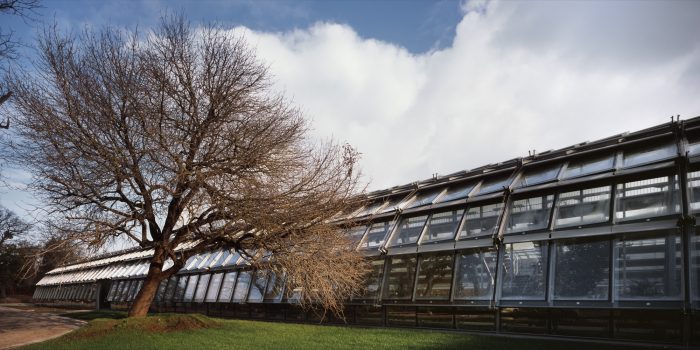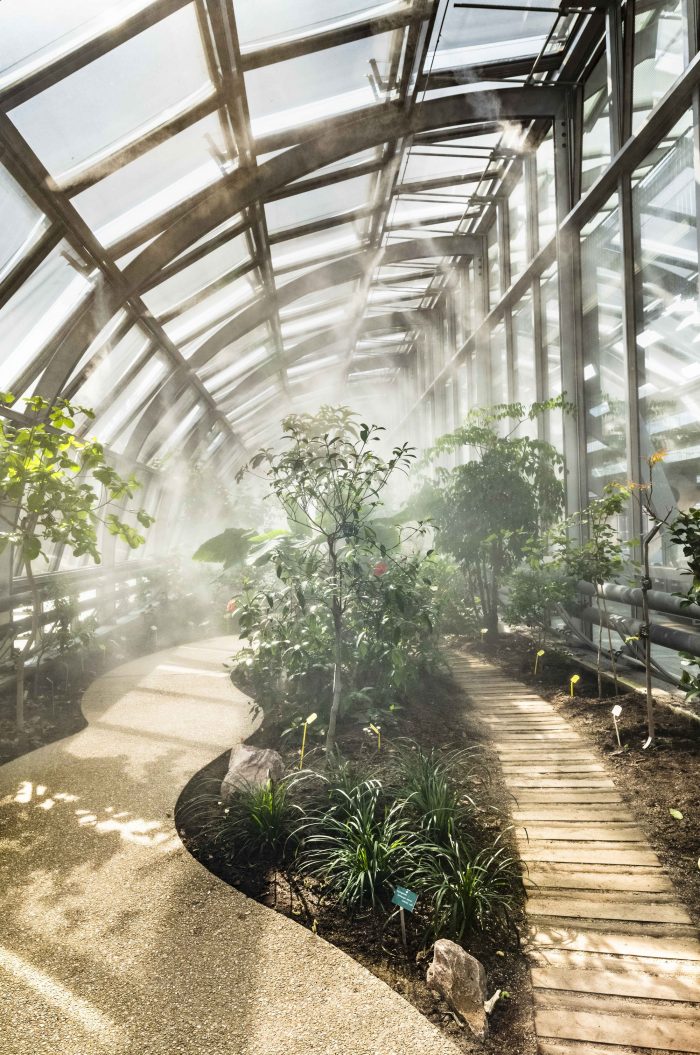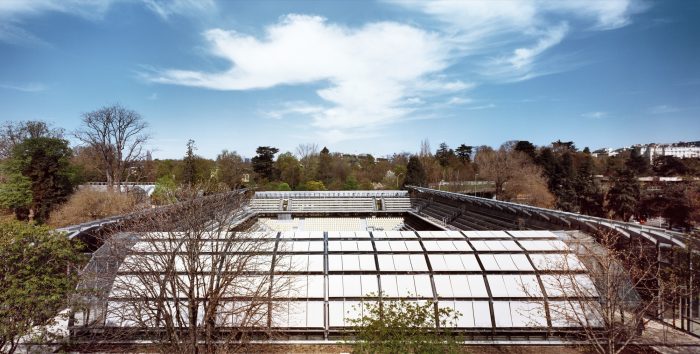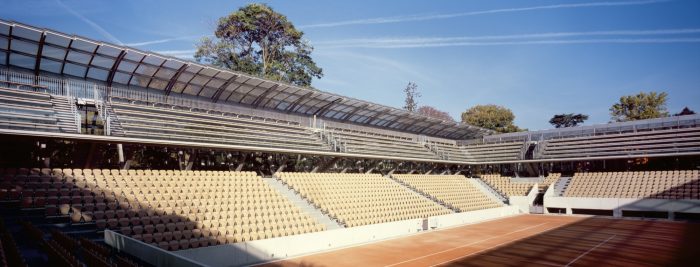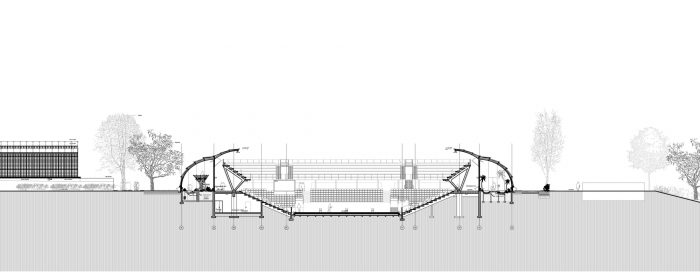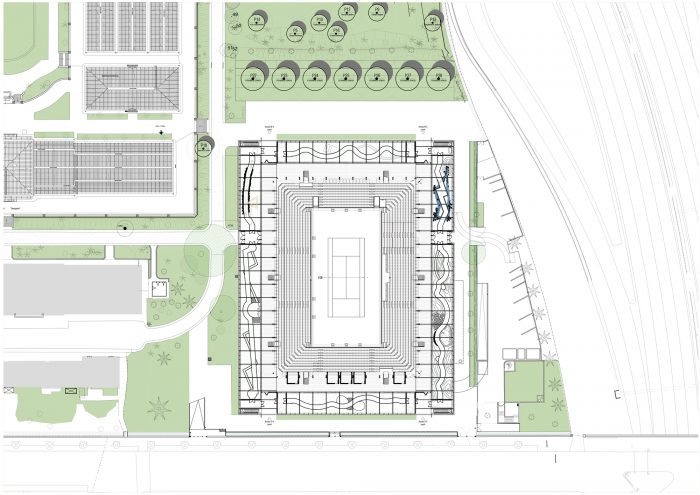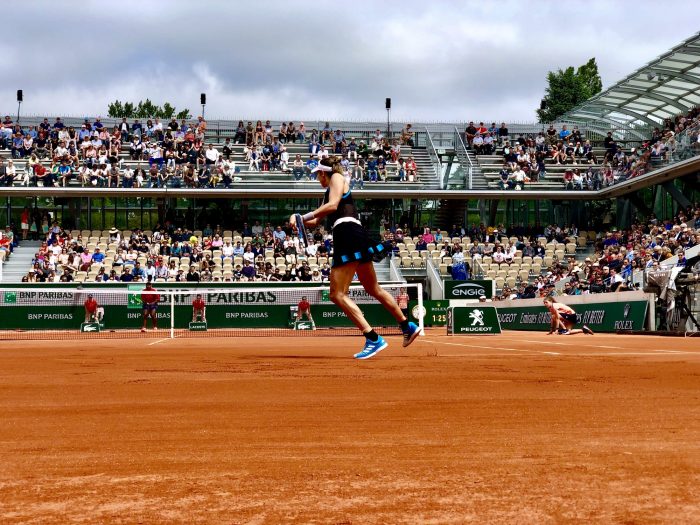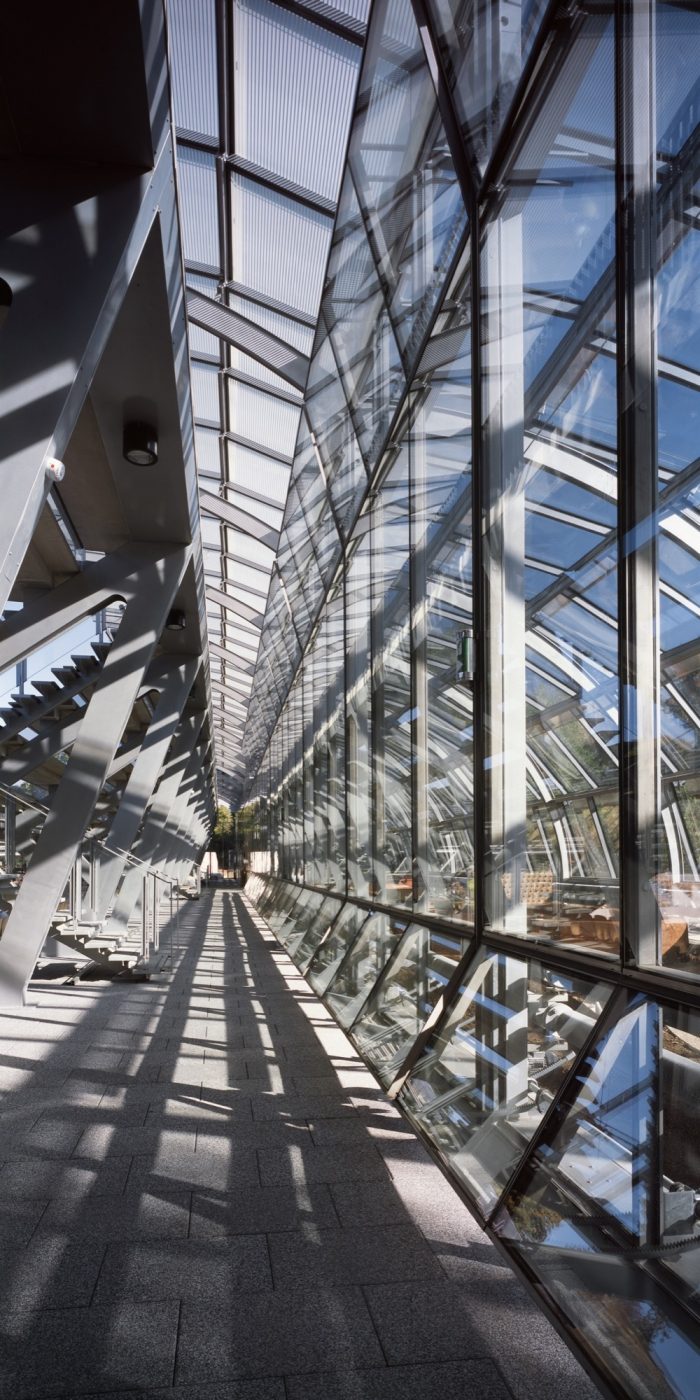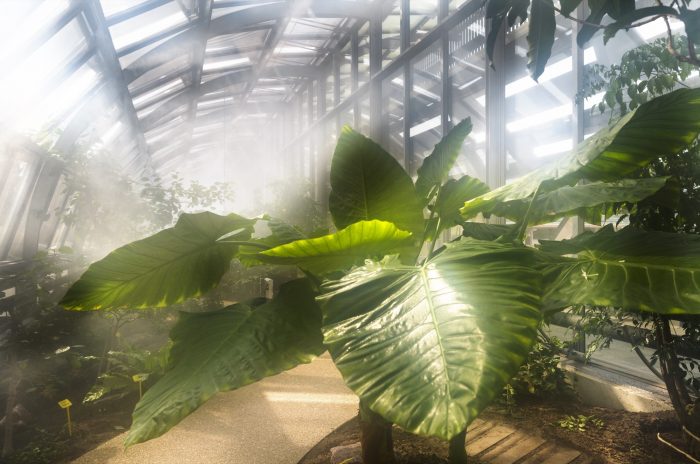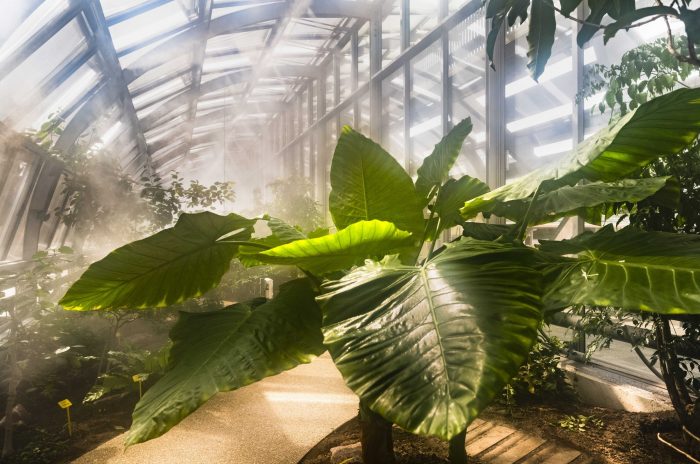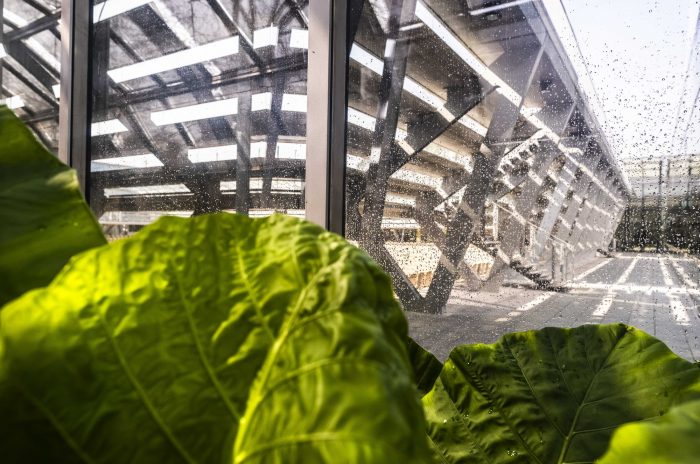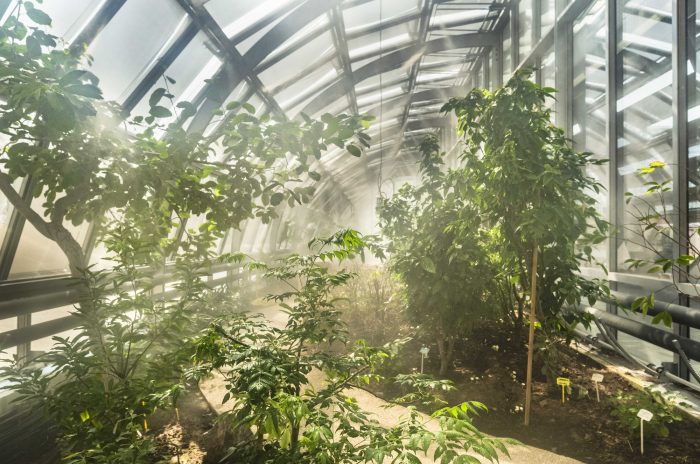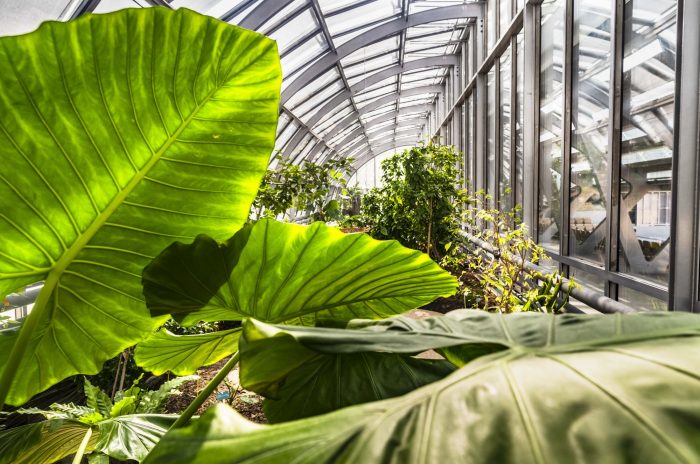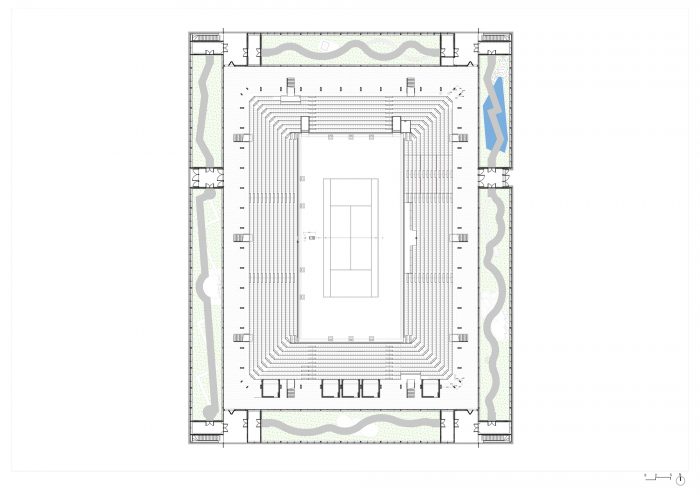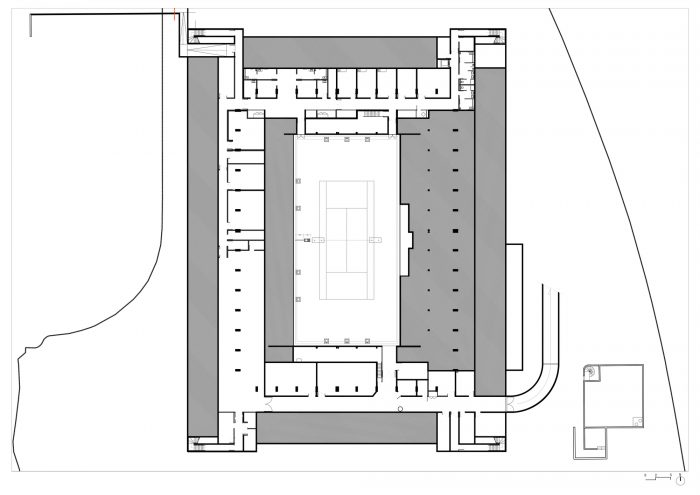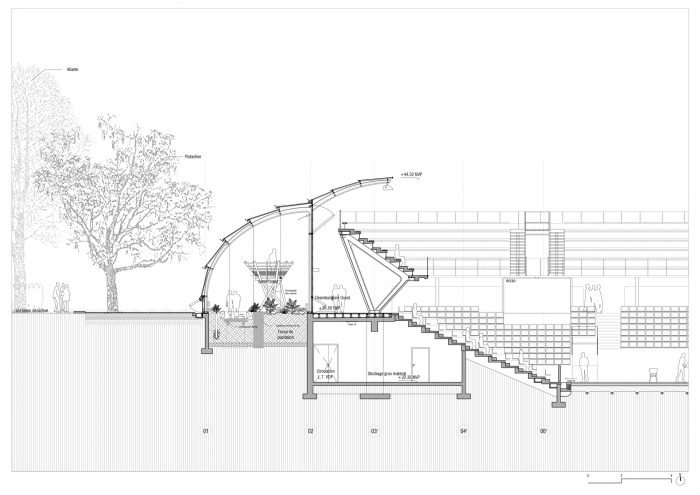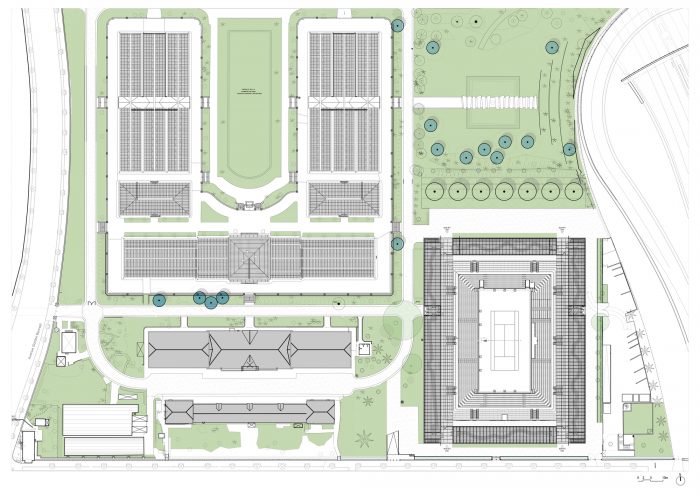当景观设计师Michel Corajoud提出改善罗兰-加洛斯国际网球比赛场地的计划时,他的意图是开放场地,建立与城市的联系。这就需要开辟一个广阔的公共空间,并在邻近的花园里建造一个可容纳5000名游客的新球场,而在不久前,花园里又增加了一些结构简陋的温室。花园的特点不是因为这些温室,而是因为1898年由Jean-Camille Formigé设计的精美的植物温室,这些温室自然不会受到威胁。
When the landscape designer Michel Corajoud put forward his plan for improvements to the Roland Garros site for the international tennis tournament, his intention was to open it up, creating a link with the city. This necessitated opening up an extensive public space and the construction of a new court accommodating 5,000 visitors in the adjacent garden where not long before some poorly constructed greenhouses had been added. The garden is notable not for these greenhouses, but rather for its fine botanical hothouses designed in 1898 by Jean-Camille Formigé, and which were naturally never under threat.
新网球场的设计灵感来自于这些十九世纪特有的玻璃和铸铁温室,新网球场的一部分将位于地面以下,周围是混凝土平台,上面是钢结构,周围是按照最高技术规格设计的植物温室。
Taking its inspiration from these hothouses made of glass and cast iron so characteristic of the nineteenth century, the new tennis court will be partly below ground level, surrounded by a terraced concrete platform, surmounted by a steel structure, and wrapped around with botanical greenhouses designed to meet the highest technical specifications.
这些新的温室形成了一个玻璃背景,来自四大洲的植物可以在其中繁衍生息。它们参考了附近温室的设计,并受到金属建筑的启发,但并不模仿,自1851年在伦敦建造水晶宫以来,金属建筑仍以其光线和结构之间的微妙关系,成为通风和经济的完美典范。
These new greenhouses form a glass backdrop, a case within which plants from four continents can flourish. They refer to the design of the nearby hothouses and are inspired by, without imitating, architecture in metal that, since the construction of the Crystal Palace in London in 1851, still stands, with its delicate relationship between light and structure, as the perfect model of airiness and economy.
有必要提供双层玻璃和比历史上的温室更有效的保温材料。在设计中,我们没有创造一个简单的光滑玻璃表面,而是利用了玻璃的碎片,它们的边缘在两个不同的方向上排列。通过这种方式,当光线因衍射而改变时,建筑的表皮就会发生变化,而不规则的破碎表面的反射也会产生振动。玻璃屋的钢结构给整个建筑带来了节奏感,与露台的平衡结构相呼应,露台上升到围绕建筑顶部的画廊。
It was necessary to provide double-glazing and much more effective insulation than that of the historical greenhouses. Rather than creating a simple surface of smooth glass the design makes use of fragmented scales of glass, their edges arranged in two different directions. In this way, the skin of the construction changes as the light alters as a result of diffraction, and vibrations are set up by the reflections on the irregular, broken up surfaces. The steel of the glasshouses gives rhythm to the whole, echoing the balanced structure of the terraces that rise up to the gallery running around the top of the building.
光线、阴影和透明度在结构上的发挥,延续了十九世纪建筑的特色效果,同时又融入了当代的氧燃料切割和焊接技术。正如米歇尔-科拉尤德所希望的那样,花园与运动、植物学与网球、技术与体能之间的对话从一个共享空间中产生。过去结构的存在丝毫不妨碍这个自信的现代建筑,恰恰相反。不同的活动在时间上相互交错;网球比赛是植物园发展的一个组成部分。Simonne-Mathieu Court是一个很好的例子,如果需要的话,说明城市生活的乐趣需要适应不断增加的不同用途的组合。
The play of light, shadows, and transparency on the structure continues the characteristic effects of nineteenth-century architecture while at the same time integrating contemporary techniques in oxy-fuel cutting and welding. Just as Michel Corajoud wished, a dialogue between gardens and sport, botany and tennis, technical and physical performance has emerged from a shared space. The presence of structures from the past in no way inhibits this confident contemporary architecture—quite the contrary. The different activities intersect in time; the tennis tournament is an integral part of the development of the botanical garden. The Simonne-Mathieu Court is a good illustration if one were needed, of the need for the pleasures of urban life to adapt to an ever-increasing combination of different uses.
建筑师:Marc Mimram
面积: 5300 m²
年份:2018年
摄影:Erieta Attali
牵头建筑师:Marc Mimram Architecture & Associés
设计团队:Martin Fougeras Lavergnolle, Francis Jacquiod, Jacques Durst
工程:Marc Mimram Ingénierie : structure and economy
INEX:流体和环境工程
合作者:Vinci : demolition – earthworks – main construction work – architectural trades Viry-Fayat : metal frame – light facades – locksmith / metal work, Sfee : electricity, Foret : plumbing – heating system – air treatment, Richel : greenhouses equipment, Etablissement Jean Lefebre : external works and landscaping
照明:AARTILL
声学:AAB
外墙:VS-A
城市:巴黎
国家:法国
Architects: Marc Mimram
Area: 5300 m²
Year: 2018
Photographs: Erieta Attali
Lead Architects:Marc Mimram Architecture & Associés
Design Team:Martin Fougeras Lavergnolle, Francis Jacquiod, Jacques Durst
Engineering:Marc Mimram Ingénierie : structure and economy
INEX:Fluid and environment engineering
Collaborators:Vinci : demolition – earthworks – main construction work – architectural trades Viry-Fayat : metal frame – light facades – locksmith / metal work, Sfee : electricity, Foret : plumbing – heating system – air treatment, Richel : greenhouses equipment, Etablissement Jean Lefebre : external works and landscaping
Lighting:AARTILL
Acoustic :AAB
Facades:VS-A
City:Paris
Country:France

